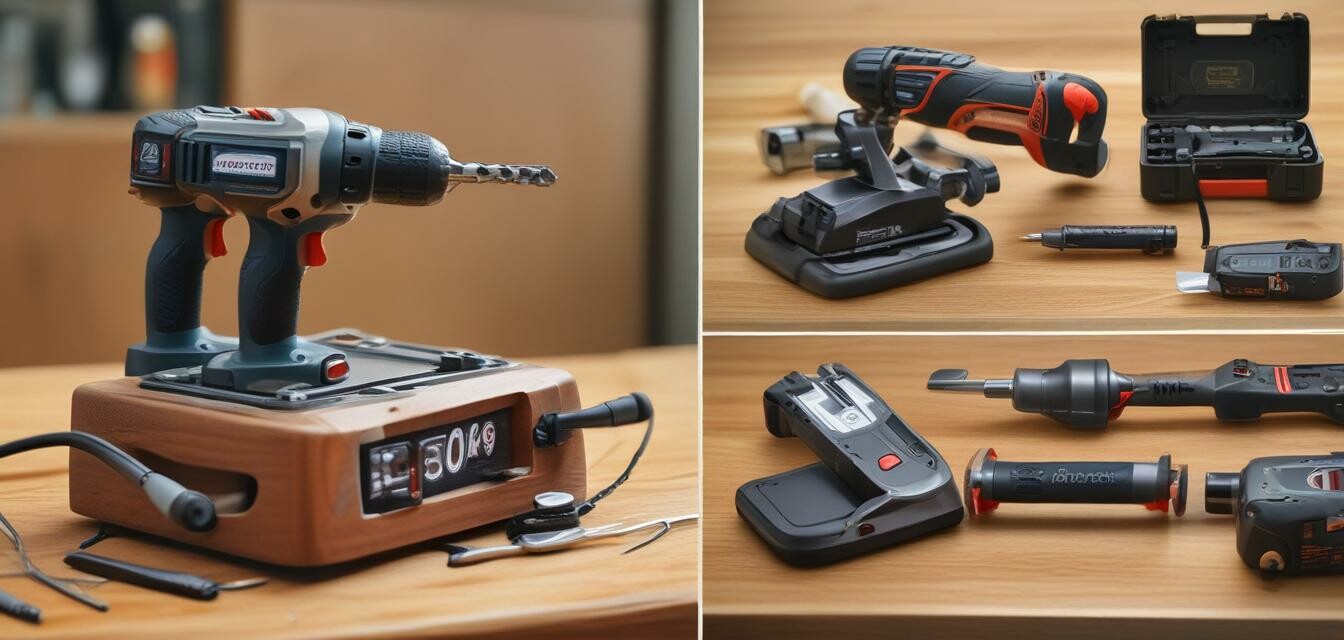
Innovations in Smart Power Tool Features
Key Takeaways
- Smart power tools are integrating advanced features for enhanced usability.
- Key innovations include Bluetooth connectivity, LED displays, and cloud technology.
- These features not only improve efficiency but also provide valuable user insights.
- Keeping up with these trends is crucial for both contractors and DIY enthusiasts.
The world of portable power tools is rapidly evolving, with smart features becoming more prevalent across various models. These innovations are designed not only to improve the functionality of the tools but also to significantly enhance usability for contractors and DIY enthusiasts alike. From Bluetooth connectivity to built-in sensors, understanding these advancements helps users choose the best tools for their projects.
What are smart power tools?
Smart power tools are those that incorporate internet connectivity and advanced technologies to enhance their capabilities. These tools offer features that can help monitor performance, track usage, and improve overall user experience. Whether you're on a job site or working on a home project, these tools provide real-time data and connectivity, making them invaluable in today's fast-paced environment.
Top innovations in smart power tools
1. Bluetooth connectivity
This feature allows users to connect their power tools to smartphones or tablets, providing control over the tool's functions. Bluetooth connectivity often enables features such as:
- Real-time feedback on tool performance
- Access to user manuals and troubleshooting tips
- Tool settings customization
2. LED displays
LED displays have become a staple in smart power tools, offering quick access to vital information. Some of the benefits of LED displays include:
- Visual indicators for battery life
- Error notifications for maintenance needs
- Real-time speed and power settings
3. Built-in sensors
Innovative sensor technology has revolutionized how power tools function. These sensors can:
- Automatically adjust speed and torque based on the material being worked on
- Detect potential hazards to enhance user safety
- Provide feedback on tool efficiency
4. Cloud technology
Many modern power tools now feature cloud technology, enabling seamless data storage and access. The implications of cloud technology in power tools include:
- Ability to track tool performance over time
- Data analysis for optimizing project outcomes
- Remote monitoring possibilities for managing tool fleets
Why these innovations matter
These smart features not only make power tools easier to use but also significantly increase efficiency and safety. As the industry moves forward, staying informed about these trends is essential for both contractors and home improvement enthusiasts.
Comparison of traditional tools vs. smart tools
| Feature | Traditional Tools | Smart Tools |
|---|---|---|
| Connectivity | None | Bluetooth, Wi-Fi |
| Performance Monitoring | Manual checks | Real-time data |
| User Interface | Basic | LED display with user feedback |
| Adjustability | Fixed settings | Automatic adjustments |
Future trends in smart power tools
As technology continues to advance, we can expect even **greater innovations** in the smart power tools category. Some anticipated trends include:
- Integration with augmented reality for improved precision
- AI-driven tools that learn user preferences
- Even more sophisticated safety features
Conclusion
Keeping up with these innovations in smart power tools can provide significant advantages in productivity, safety, and technology usage. As they continue to evolve, it is essential to stay informed about these exciting changes. For more tools and tips, check out our articles on angle grinders, cordless drills, and buying guides.
Pros
- Enhanced usability through connectivity and smart features.
- Improved performance monitoring.
- Automatic adjustments for efficiency.
- Increased safety through built-in sensors.
Cons
- Higher initial costs compared to traditional tools.
- Dependency on battery life for functionality.
- Potential learning curve for less tech-savvy users.
